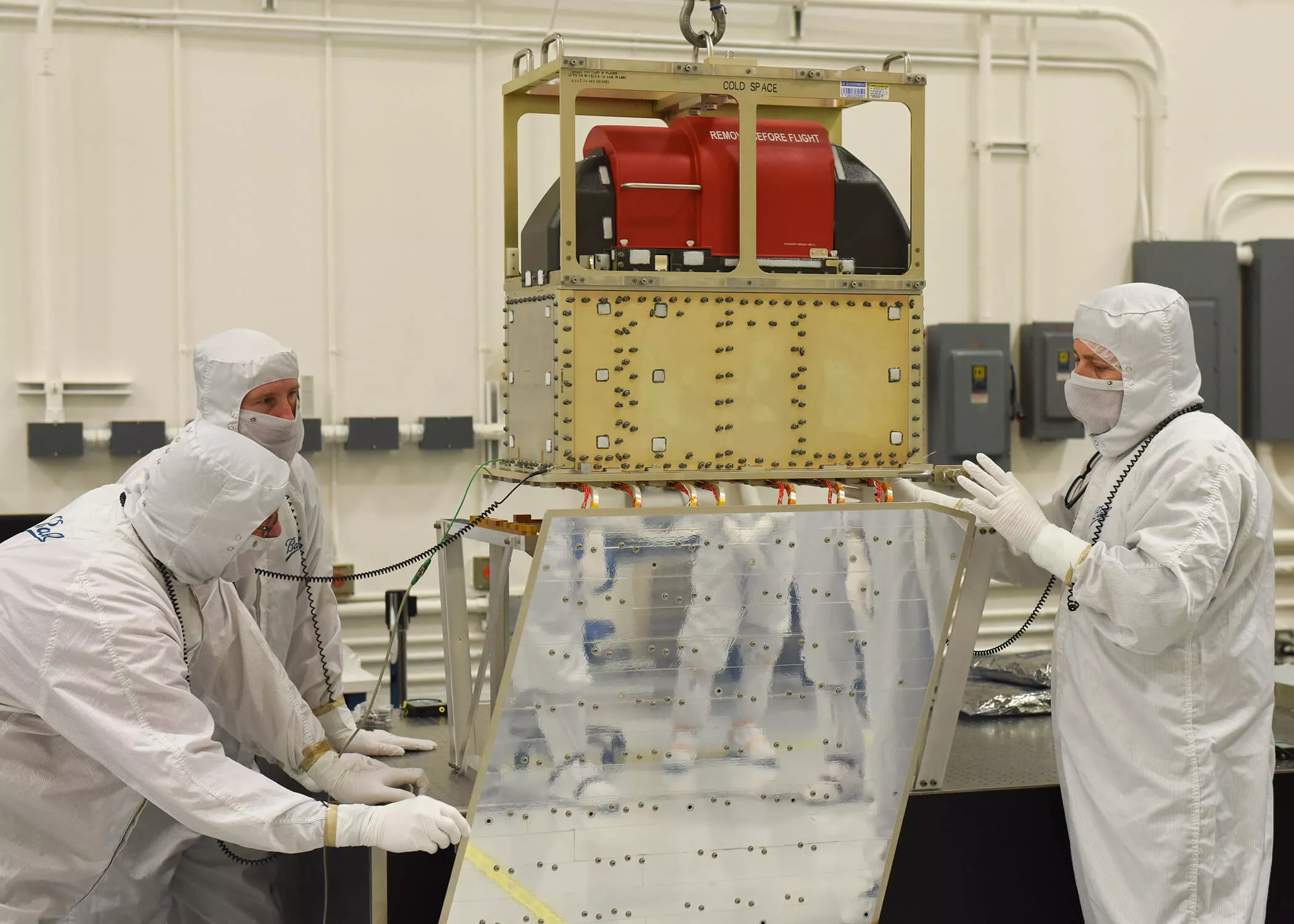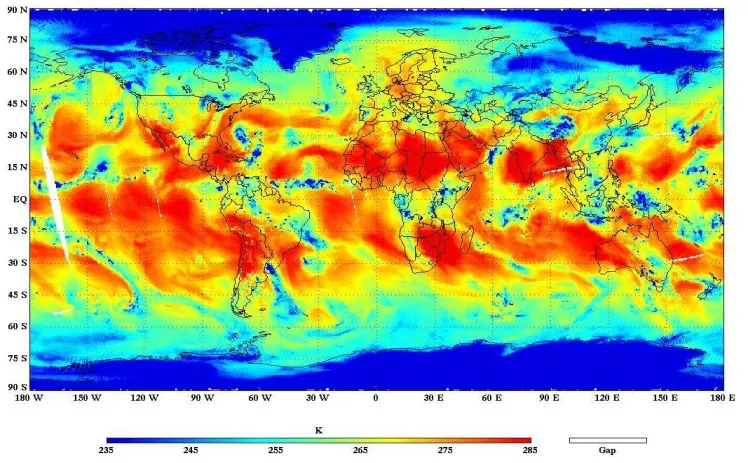The final instrument to be integrated with NOAA’s Joint Polar Satellite System-1 (JPSS-1) satellite is now complete, moving the spacecraft development towards launch as planned in early 2017. The Advanced Technology Microwave Sounder (ATMS) instrument is the fifth and final instrument to be integrated with the JPSS-1 spacecraft. It follows the successful integration of the Cross-track Infrared Sounder (CrIS), Ozone Mapping and Profiler Suite-Nadir (OMPS-N), the Clouds and the Earth's Radiant Energy System (CERES), and the Visible Infrared Imaging Radiometer Suite (VIIRS) instruments
“This marks a very significant milestone for the JPSS program,” said Harry Cikanek, JPSS Director. “Soon, the spacecraft will be prepared for the environmental testing phase which is the next step toward launch.”
ATMS is built by Northrop Grumman in Azusa, California and was delivered to Ball Aerospace & Technologies Corp. in Boulder, Colorado where it was integrated with the spacecraft. ATMS collects microwave radiation from the Earth's atmosphere and surface all day and all night, even through clouds. It is one of the two sounders that provide information about the vertical temperature and moisture distribution of the atmosphere to the National Weather Service’s numerical weather prediction models that are critical to predict severe weather 3-7 days in advance. ATMS currently flies on the NOAA/NASA Suomi NPP satellite mission and will fly on the JPSS-1, JPSS-2, JPSS-3 and JPSS-4 satellite missions.

“We worked quickly to incorporate temperature and humidity based data from ATMS on the Suomi NPP spacecraft into NOAA’s operational numerical weather prediction models, which has improved the accuracy of the model forecast,” said James Yoe, Ph.D., NOAA’s National Weather Service. “The JPSS-1 ATMS sensor will guarantee that this critical data stream remains seamlessly in place to support global forecasting in the future.”
Compared to legacy NOAA microwave sounders, ATMS offers more channels, better resolution and a wider swath, improving the accuracy of short- and medium-term forecasting, storm tracking, and, with continued measurements over time, climate prediction models. ATMS helps collect essential data for accurate near-term weather predictions needed for farming, commercial and defense aircraft flight path planning, terrestrial extreme weather preparedness and oceanographic inputs for civilian and defense ships. ATMS measurements also provide rainfall rates, and snow and ice information. Historically, microwave sounders like ATMS have the greatest impact on forecast accuracy, so this next-generation instrument continues that key role.

Together, CrIS and ATMS primarily provide data on the hydrologic cycle, which includes water vapor, clouds and precipitation. Because clouds are opaque in the infrared part of the spectrum (measured by the CrIS) and largely transparent at microwave frequencies (measured by ATMS), operating them together makes it possible to cover a broader range of weather conditions. ATMS is able to view inside and below clouds and is used to produce images inside storms, including hurricanes. This provides invaluable data for understanding storms and making predictions up to three to seven days in advance of a severe weather event.
JPSS represents significant technological and scientific advances in environmental monitoring and helps advance weather, climate, environmental and oceanographic forecasting and monitoring. JPSS delivers key observations for the Nation's essential products and services, including forecasting severe weather like hurricanes, tornadoes and blizzards days in advance, and assessing environmental hazards such as droughts, forest fires, poor air quality and harmful coastal waters, helping to secure a more ‘Weather-Ready Nation.’
JPSS enables scientists and forecasters to monitor and predict weather patterns with greater accuracy and to study long-term climate trends by extending the more than 30-year satellite data record. JPSS is a collaboration between NOAA and NASA. NOAA is responsible for managing and operating the JPSS satellites, while NASA is responsible for developing and building the JPSS instruments, spacecraft, launch services and major components of the ground segment.
